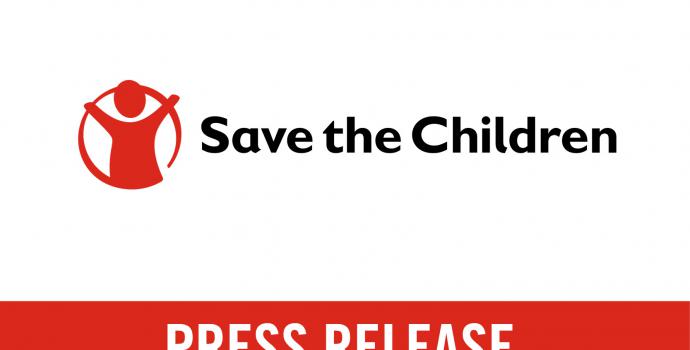Source: Save The Children
- Survey by Save the Children finds a third of families have lost their entire household income since August.
- 18% of families have sent children out to work, with more than one million children thought to be working.
- Data reveals a surge in families borrowing to afford food.
KABUL, 15 February 2022 – Up to one fifth of families in Afghanistan have been forced to send their children out to work as incomes have plummeted in the past six months with an estimated one million children now engaged in child labour, according to new Save the Children research.
A survey of 1,400 households across seven provinces of Afghanistan found that 82% of Afghans have lost income since the collapse of the former government and transition of power last August, with 18% reporting they had no choice but to send their children out to work.
According to Save the Children’s analysis, if just one child in each of these families is being sent to work, then more than one million children in the country are engaged in child labour.
More than 80% of those surveyed reported a loss of income, with a third (34.8%) having lost all of their household income, and a quarter (26.6%) having lost more than half. Families living in cities were hit hardest, with half of families in Kabul saying they had lost their entire income.
The huge spike in prices caused by the economic crisis has left many families unable to afford food. About 36% of families reported that they are purchasing food in the market on credit, whereas 24% said they did previously. Thirty-nine percent are borrowing food from better-off families, compared to just 25% previously.
As families sink further into debt and poverty, 7.5% said they were begging or relying on charity to feed their families.
Last week, Save the Children spoke to Laila*, 12, who has been living with her mother and four siblings in a displacement camp in Balkh Province since her father was killed. Before Save the Children helped her, Laila was working cleaning homes for the equivalent of about 10 U.S. cents per day. Her 15-year-old sister is still going to work.
Laila said: “When I worked in people’s houses, it was very hard. I would go and work from morning till evening. I worked because I had to. I would go and bring home 10 Afghanis ($ 0.10) and buy tea with it for my family.
Laila’s* mother, Shugofa*, 36, said: “How can I feel when a piece of my heart goes out and works for others? But what could I do? I felt sorry that my child must work cleaning people’s rubbish and dirt.
“Not having a breadwinner and having five children without a father, you can imagine how difficult it is … We sometimes eat only once a day, and other times we eat bread on its own, three times a day. I make the children eat less or once a day so that the food lasts for one more day. And we cook smaller quantities, to avoid running out of food for the next day. My children are weak and skinny.”In the wake of the conflict, economic freefall and spiralling prices, a brutal wave of hunger and hardship has swept Afghanistan. This winter, 14 million children are expected to face potentially life-threatening levels of hunger, and rates of malnutrition are soaring.
Last month, Save the Children reported that the number of dangerously malnourished children visiting its health clinics had more than doubled since August.
Save the Children’s Country Director in Afghanistan, Chris Nyamandi, said:
“I’ve never seen anything like the desperate situation we have here in Afghanistan. We treat frighteningly ill children every day who haven’t eaten anything except bread for months. Parents are having to make impossible decisions – which of their children do they feed? Do they send their children to work or let them starve? These are excruciating choices that no parent should have to make.
“There is no shortage of food here – the markets are full. Yet children are starving to death because their parents can’t afford to pay for food. This could, and should, have been prevented. But it is not too late to prevent further tragedy if we act now.
“We’re doing everything we can to get families the help they need. But the truth is that humanitarian aid can only go so far. This is an economic crisis, and it needs an economic solution. Governments must find a way to unlock vital funds and unfreeze financial assets to prevent the crisis from spiralling any further.”
Save the children is providing families with urgent cash assistance and winter kits with essential items to get them through the winter. Cash assistance helps to prevent families from resorting to desperate measures that adversely affect children such as child labour, early marriage and reduced meals. Since September 2021, Save the Children has reached 763,000 people, including 430,800 children, and provided more than 127,000 people with multi purposes cash transfers and cash for food.
NOTES TO EDITORS
Save the Children surveyed 1,409 respondents in seven provinces where we have an operational presence: Balkh, Faryab, Jawzjan, Kabul, Kandahar, Nangarhar and Sari-pul. Stratified random cluster sampling was performed with the district as the primary sampling unit, and ensuring a gender balance among respondents. The districts represent the four regions of Afghanistan and cultural groups within them.
Our sample is representative of Save the Children’s programme participant populations in the seven districts. The programme participant population characteristics are akin to the characteristics of the wider population of the districts, in terms of demographics, socio-economic conditions, access to livelihoods etc.
The seven districts are spread over the four regions of Afghanistan (West, South, East and North region) and represent all population characteristics in Afghanistan. For instance, they are similar to neighbouring districts in terms of cultural context, language and recent impacts of changes to power in the country.



